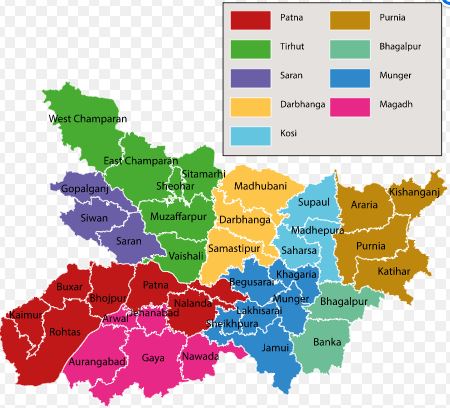
Rivers of Bihar | Geography of Bihar Notes
Rivers of Bihar Notes of Bihar notes/study material for preparation of BPSC Prelims and Mains and other Bihar state examinations
Home » BPSC Study Materials » Geography of Bihar » Soils of Bihar | Geography of Bihar Notes
Soils of Bihar notes/study material for preparation of BPSC Prelims and Mains and other Bihar state examinations
Bihar is located on the fertile alluvial plain of Gangetic Valley which extends from the foothills of the Himalayas in the north to a few kilometers south of the river Ganga.
Due to the Variation in relief, precipitation, vegetation and parent rocks, different types of solid are found in Bihar.
Let’s study about each soil in Bihar in detail.
Soils in Bihar can be broadly classified into seven categories, which are distributed across the state in different places.
You can study complete study material for BPSC here : Complete BPSC free study material

Rivers of Bihar Notes of Bihar notes/study material for preparation of BPSC Prelims and Mains and other Bihar state examinations

Physical Features of Bihar notes/study material for preparation of BPSC Prelims and Mains and other Bihar state examinations
We are adding new Notes, Chapterwise MCQs, Quizzes, Previous Years Questions everyday
We are adding new Notes, Chapterwise MCQs, Quizzes, Previous Years Questions everyday